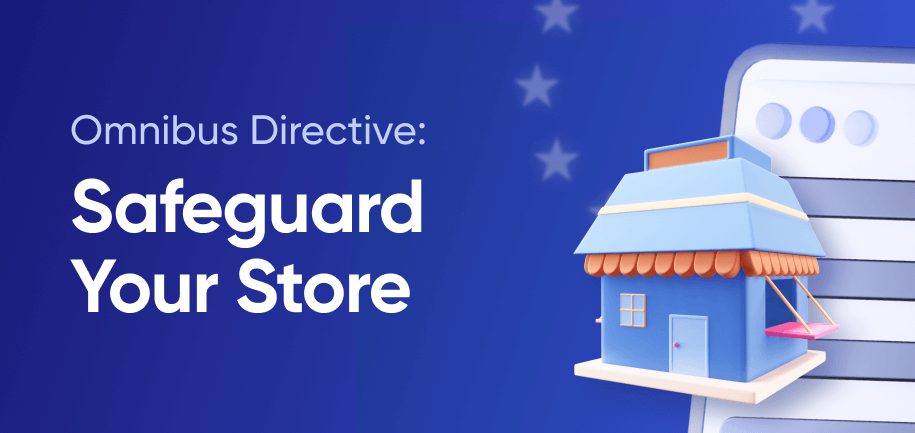Price is a strong and influential brand attribute. It’s only natural that various brands want to ensure that the prices, charged by e-commerce sites for their products, properly reflect their market image. To better control sellers' prices, manufacturers implement a Minimum Advertised Price policy and require MAP compliance. But what exactly are these and how do you comply with them?
What is MAP Policy?
The MAP – Minimum Advertised Price – is the minimal amount of money that you can charge for a product. Although MAP pricing does not dictate the actual selling price, it represents the minimum price enforcement, setting a floor price below which you are not allowed to advertise the product.
MAP compliance, by extension, is when the reseller keeps the advertised product prices at or above the minimum price, specified by the manufacturer. For example, a shoe brand may set a MAP of $89. To ensure advertised price compliance, you should avoid advertising the shoe for less than $89.
Penalties for MAP Pricing Violation
Many brands and manufacturers practice advertised price enforcement. In other words, when a retailer violates MAP pricing compliance, they may receive a cease and desist notice demanding to stop advertising or selling the product below the floor price.
If the notice is ignored, brands may resort to penalizing the retailer. Common minimum advertised price compliance penalties include suspension of supply, termination of the retailer's account or distribution agreement, as well as injunctions or lawsuits for breach of contract or trademark infringement.
All these risks make MAP compliance one of the key retail regulations.
MAP vs MSRP
Manufacturers and brands also often establish MSRP (Manufacturer's Suggested Retail Price) – the price recommended for you to sell their products. This price is a benchmark to help set realistic prices that will allow you to enjoy good profit margins without violating MAP regulations. It is not the floor price.
Unlike minimum price compliance, manufacturer price compliance isn’t mandatory. You can choose to sell the product at the suggested or a different price. The only MSRP benefit for a brand is the consistent pricing of a product across various retail outlets. However, always ensuring MSRP compliance can be detrimental to your competition and marketing strategies.
Why MAP Pricing Enforcement is Important
Brand Value. Consumers associate high prices with quality. If a retailer sells an item for an unusually low price, consumers inevitably think that the product has a lower value. With the help of retailer price compliance, brands help consumers understand how much their brand is worth.
Equality. Sometimes, brands require reseller price compliance to protect their brick-and-mortar partners from e-commerce retailers' ability to get a bigger profit margin even when selling products at a lower cost. E-commerce MAP monitoring helps to level the playing field for all retailers and ensures that brick-and-mortar partners can continue profiting from product sales.
Profitability. Minimum advertised price compliance also protects all retail partners from the loss of profit margin that could happen if one retailer chose to advertise a drastically lowered price on an item. When one retailer discounts an item, you must follow to maintain market share. But if all prices on the market fall too low, you and other retailers will not make any profit.
What is MAP Monitoring?
Minimum advertised price monitoring helps brand owners oversee if their retail partners are fulfilling their pricing agreements and send enforcement letters to those who violate them. Effective monitoring includes regular checks of the brick-and-mortar stores, e-commerce websites, and social media.
Brands can manually monitor your pricing through random audits or offer rewards to retailers who turn in non-compliant retailers. However, using MAP compliance software is more common.
Features of MAP Compliance Software
MAP compliance software automates the minimum advertised price tracking processes and helps enforce a pricing strategy. The software scans prices across all your channels. The popular features of such software include:
- Identification of cases of non-compliance, where products are advertised below the minimum advertised price set by the manufacturer or brand.
- Centralized compliance map dashboard with comprehensive reports on compliance statuses.
- Real-time alerts whenever a retailer violates MAP pricing guidelines, letting a brand take swift action.
- Compliance records and documentation for audits and legal purposes.
Some software will also automatically warn sellers when they are in violation and tell them how they can take steps to return to compliance. It will also include tools to help identify and contact Amazon vendors (who are often anonymous) by leveraging tracing techniques that discover the retailers' identities.
7 MAP Compliance Best Practices
Retailers, who successfully comply with minimum advertised prices, follow several best practices. Here are some of them:
- Understand the MAP Policy – The first step in successful MAP compliance is understanding it. Study the brand values and MAP guidelines. Learn the penalties for failing to comply and inform your team about them.
- Provide Employee Training – Provide ample training and education to employees who are directly involved in pricing and sales. Make sure that everyone involved in the pricing process is aware of the brands’ restrictions and knows how to address violations.
- Monitor and Track – Use software for regularly tracking product pricing data to identify any deviations from the MAP.
- Communicate with Suppliers – Be sure to communicate with your supply partners about the policy. Always stay informed about any changes and updates to MAP policies.
- Keep Records – Keep detailed records of pricing data (including base prices for eligible products). Preserve your communications with suppliers too. This documentation can serve as evidence of compliance in case of misunderstandings.
- Price Consistently Across Channels – Maintain consistent pricing for products across all sales channels, ensuring that all prices remain in line with the established MAP via product feed tools.
- Respond Promptly – Take quick action to address any MAP violations. Adjust prices, communicate with suppliers to rectify discrepancies, or discontinue sales of non-compliant products to ensure ongoing compliance. You can also temporarily hide prices or enable the 'Call for Price' feature.
Key Takeaways
Minimum Advertised Price (MAP) aims to safeguard brand integrity, ensure fair competition, and guarantee profitability for both brick-and-mortar and e-commerce stores. Unlike MSRP, the MAP pricing strategy implies legal responsibility and can result in lawsuits in case of non-compliance.
To ensure that your e-commerce catalog fully adheres to the suppliers’ MAP policies, train your employees, ensure cross-channel pricing consistency, and use specific software that helps you track your prices or efficiently react to any violations.




















